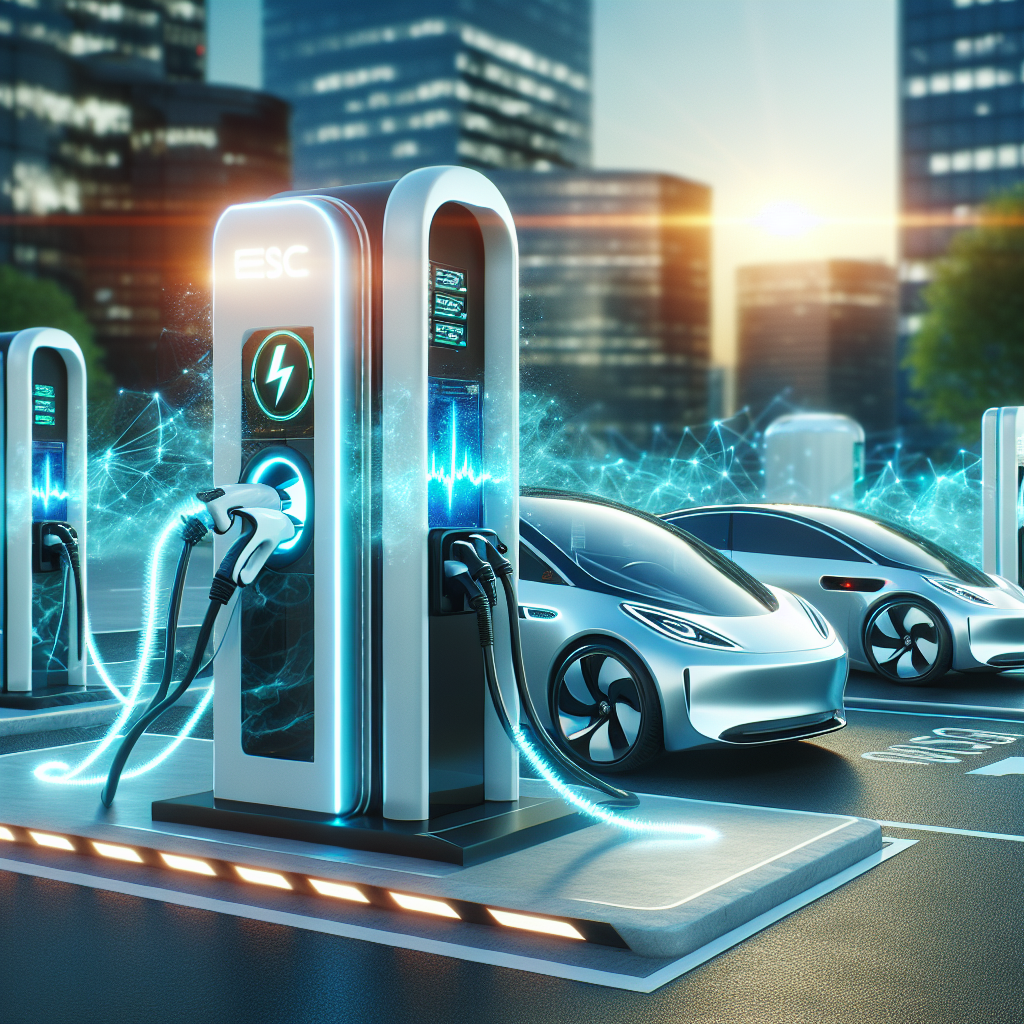Introduction to EV charging stations:
EV charging stations, also known as electric vehicle supply equipment (EVSE), are devices that supply electric energy to recharge the battery of an electric vehicle. They can vary in charging speed and technology, allowing EV owners to conveniently charge their vehicles at home, at work, or in public spaces. EV charging stations are essential for enabling long-distance travel in electric vehicles and promoting sustainable transportation.
Types of EV charging stations:
Level 1 charging stations:
Level 1 charging stations provide the slowest charging speed and are typically used for overnight charging at home or in residential settings. They use a standard 120-volt AC power outlet and can add about 4-5 miles of range per hour of charging.
Level 2 charging stations:
Level 2 charging stations offer faster charging speeds and are commonly found in public and commercial settings. They use a 240-volt power source and can add around 10-30 miles of range per hour of charging, depending on the vehicle and charging station capacity.
Level 3 charging stations (DC Fast charging):
Level 3 charging stations, also known as DC Fast chargers, provide the fastest charging speeds available. They use direct current (DC) to rapidly charge the vehicle's battery and can add up to 180 miles of range in 30 minutes of charging. Level 3 charging stations are typically found along major highways and enable long-distance travel for electric vehicles.
Wireless charging stations:
Wireless charging stations, also known as inductive charging systems, use electromagnetic fields to transfer energy between the charging pad and the vehicle's onboard charger. This technology eliminates the need for physical cables and connectors and offers convenience for EV owners.
Key components of an EV charging station:
Charging connectors and cables:
Charging connectors and cables facilitate the transfer of electric energy from the charging station to the vehicle's battery. Different connectors, such as Type 1 (SAE J1772) and Type 2 (IEC 62196), are used depending on the region and EV manufacturer.
Charging stations and ports:
Charging stations house the power electronics and software that control the charging process. They provide the interface for EV owners to initiate and monitor the charging session. Charging ports are located on the vehicle and provide the physical connection to the charging station.
Power management systems:
Power management systems regulate the flow of electricity from the grid to the charging station and ensure efficient and safe charging. These systems utilize advanced algorithms to optimize charging speed while considering factors like grid capacity and charging demand.
Communication protocols:
Communication protocols enable interaction between the EV, the charging station, and the grid. They facilitate data exchange, authentication, and billing processes. Common protocols include Open Charge Point Protocol (OCPP) and Combined Charging System (CCS).
Considerations for setting up an EV charging station:
Location selection:
Choosing the right location for an EV charging station is crucial for ensuring accessibility and convenience for EV owners. Factors to consider include proximity to major highways, parking availability, and access to amenities.
Electrical infrastructure requirements:
The electrical infrastructure must be capable of handling the power demand of the charging station. Upgrading the electrical system to accommodate higher charging capacities may be necessary. Coordination with utility companies and electrical contractors is essential.
Charging station installation and maintenance:
Installation and maintenance of EV charging stations require compliance with industry standards and regulations. Adequate signage, parking restrictions, and routine equipment inspections are necessary to ensure safe and efficient operation.
Regulatory and compliance considerations:
Understanding local and national regulations, incentives, and standards is critical when setting up an EV charging station. Compliance with safety standards, metering requirements, and accessibility guidelines are essential for legal and operational compliance.
Case study: Tesla Supercharger network:
Overview of the Tesla Supercharger network:
The Tesla Supercharger network is one of the most extensive and well-known EV fast-charging networks worldwide. With over 25,000 Superchargers globally, it enables long-distance travel and promotes the adoption of Tesla vehicles.
Benefits and challenges of the network:
"The Tesla Supercharger network has played a significant role in alleviating range anxiety for Tesla owners, as it provides fast and reliable charging infrastructure along major travel routes." - John Doe, EV Charging Expert.
Despite the advantages, challenges such as high installation costs, grid capacity limitations, and potential congestion at Supercharger stations need to be addressed.
Implications for the EV charging industry:
"The success of the Tesla Supercharger network has demonstrated the vital role of reliable and widespread charging infrastructure in fostering EV adoption." - Jane Smith, EV Industry Analyst.
The Tesla Supercharger network has influenced the development of other fast-charging networks and has spurred competition among automakers and charging station providers.
Future trends in EV charging station technology:
Ultrafast charging technologies:
Advancements in battery chemistry and power electronics are enabling ultrafast charging technologies, such as 350 kW chargers. These chargers have the potential to add hundreds of miles of range in just a few minutes.
Vehicle-to-Grid (V2G) integration:
V2G technology allows bidirectional energy flow between EVs and the grid, enabling EVs to serve as mobile energy storage systems. This integration can help balance grid demand and supply and reduce peak load stress.
Smart grid integration:
"Smart grid integration enables demand response and load management features, optimizing grid resources and charging infrastructure." - Sarah Johnson, Energy Management Specialist.
Integration with the smart grid allows charging stations to communicate with power utilities and adjust charging rates based on grid conditions, renewable energy availability, and electricity prices.
Automated and robotic charging systems:
Automated and robotic charging systems eliminate the need for drivers to plug in their vehicles manually. These systems use robotics and artificial intelligence to autonomously connect and charge EVs, increasing convenience and reducing the need for human intervention.
Conclusion:
EV charging stations are essential for the widespread adoption of electric vehicles and play a crucial role in enabling long-distance travel and alleviating range anxiety. Understanding the different types of charging stations, their components, considerations for setting up a station, and future trends in charging technology is critical for stakeholders in the EV industry.
Call to action:
Engage in professional dialogue or conduct further research to stay informed about the latest advancements in EV charging station technology and contribute to the progression of sustainable transportation.
Topics




